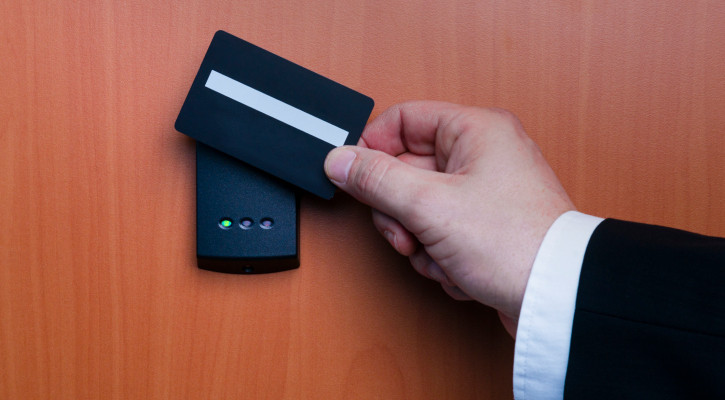
Today’s security and access control systems are a great improvement over the ones of yesteryears. We don’t often see security guards carrying a key ring that weighs ten pounds anymore. We may see access control panels that involve punching in a series of digits, but we’re more likely to see panels that read badges. Do those cards mean we’ve achieved frictionless access control? We don’t think so.
Frictionless access control is about how people experience the actual act of entering and inhabiting a space.
It’s also about integrating applications so that solutions aren’t, as our CEO Steve Van Till says, “stove-piped.” Security and access control as a frictionless experience A frictionless experience starts before people enter the building.
In the case of guests, this means establishing their identities and access privileges prior to their visit, then sharing those details with them before they arrive.
That way, they are not confronted by the security guard or receptionist and have to answer 20 questions about why they’re there.
They’re already known by the space and the people who work in it. They simply enter the building and head to where their meeting is taking place.
Our Rändivoo application is based on that scenario; people are entered into the system so that when they come to the building they just use the unique QR code or other identifier to let their contact person know they’ve arrived.
It results in less friction for both the people coming and the person being met.
Takeaway: How can we develop frictionless experiences that start before people enter the building?
Frictionless experiences occur within the building, too. Employees typically use badges to access rooms, but what if that step could be streamlined?
One way to simplify access is to design solutions that incorporate mobile devices and wearables.
We believe the Bring Your Own Device (BYOD) and Bring Your Own Wearable (BYOD) trends will transform the workplace experience.
Instead of employees having to fish in their pockets or purses for their badges, they’re automatically granted entry because the reader recognizes their mobile or wearable signature.
Takeaway: How can we further ease access so that people can use items they already carry with them as their identities?
Integrating applications for a frictionless experience
We know that stove-piping applications —the process of deploying single-purpose applications that don’t communicate with other systems and processes—results in poor data and increases costs.
When we develop our applications, we have to design with collaboration in mind.
The SAM API is a case in point. It’s designed to be integrated into existing applications and to be tested for other use-case scenarios.
We think opening the API to development serves us all; we discover solutions we wouldn’t have thought of on our own. As a result, we’re able to learn and to design applications that better assist our companies and produce experiences that keep people happy and productive.
Takeaway: How can we urge for API standards so that different applications are easier to integrate?
As we seek to create frictionless experiences, we have to consider how friction affects not only the physical space but also the digital one.
We also have to think through how to establish a set of standards so that development becomes easier to accomplish.
What do you think about frictionless access control? How are you building toward frictionless experiences within your workplace?
Source: brivolabs.com
